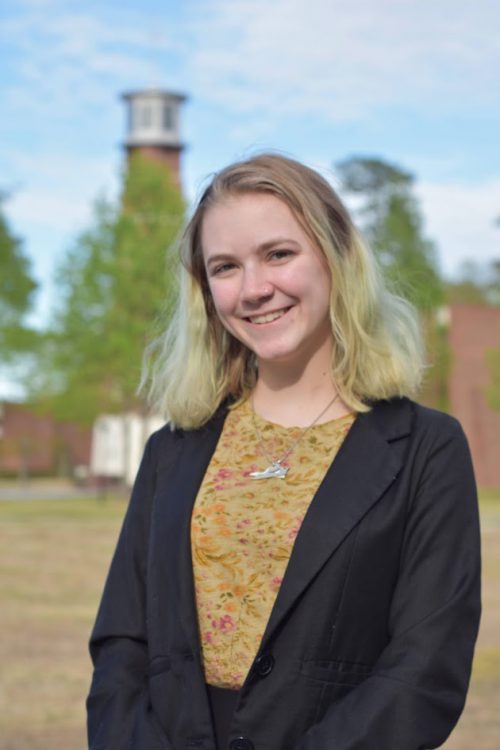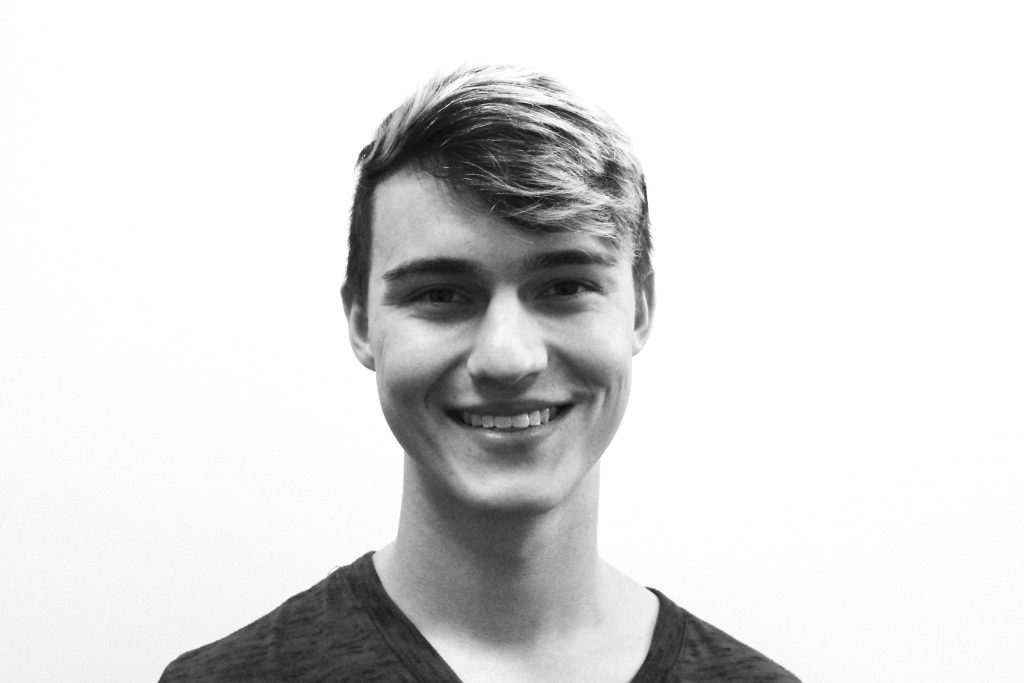Clarissa is a sophomore, double majoring in Business and International Studies with a concentration in International Business. She hopes to become an international consultant with a focus on business attraction. She is a first-generation college student at VWU, where she plays field hockey, runs track and interns with Virginia Beach Economic Development. She stays busy, but loves being involved!
McKenna Howenstine|Marlin Chronicle
CEO of the Spring 2025 Conference answered questions from Marketing Coordinator of The Marlin Chronicle Bryant Cotterell.
Bryant: Can you give a brief overview of the Marlin Business Conference and its purpose?
Clarissa: The Marlin Business Conference is a biannual event hosted by students in MBE*301 Principles of Management: A Project Approach. It’s designed to connect students, professionals and industry leaders in a collaborative environment where they can explore trends, opportunities and challenges in the business world.
With keynote speakers, panel discussions, competitions and hands-on workshops, the conference creates space for professional development, networking and real-world insight. It’s all about inspiring attendees and equipping them with tools and knowledge for their future careers and ventures.
Q: What kind of planning and effort went into making the conference a reality?
A: Like I mentioned during the opening session introduction: this conference was built on teamwork, caffeine and more Google Docs than I could count. Behind every panel discussion and speaker session you see today was an incredible amount of coordination. From the initial brainstorming meetings to the last-minute logistics, this entire event was a full-on collaborative effort.
What makes it even more special is that it was all led by students. From the speaker lineup to the room arrangements and tech setup, every detail was planned and executed by a team of peers who were just as passionate about making this event meaningful as they were about learning through the process.
There were late nights and early mornings spent editing schedules, troubleshooting problems we didn’t even know could exist and encouraging each other when things get stressful. Everyone brought something different to the table, and it was that mix of ideas, energy and commitment that brought this conference to life.
Q: How vital was collaboration and teamwork throughout the planning process?
A: They were absolutely essential. Teamwork was everything. From day one, this wasn’t the kind of project any one person could tackle alone. We were constantly leaning on each other’s strengths, and that interdependence is really what made it all possible.
What made it work was the trust we built within the team. We communicated openly and frequently, shared responsibilities instead of assigning them in a top-down way and made decisions together. It felt less like we were divvying up tasks and more like we were co-leading the entire effort.
Q: Did you encounter any challenges or need to make compromises when it came to budgeting or staffing?
A: Absolutely. One of the biggest challenges we faced was staffing, especially for volunteer roles like managing the concession stands or simply attending events as support during conference week. Most of our class is made up of spring-season athletes, and others often work off-campus jobs on weekends.
My advice to students planning their four years: if you’re an athlete, try to take this course during your off-season, and if you work weekends, talk to your manager early about your involvement.
Q: What was your favorite aspect of organizing the conference, particularly in terms of motivating students for future events?
A: Hands down the connections. And I don’t just mean networking with professionals or meeting potential mentors, although those were incredible opportunities too. What really stood out to me were the deeper, more personal relationships I built with my classmates.
There’s something uniquely powerful about working side by side with people toward a shared goal, especially one as ambitious and multifaceted as this conference. You see everyone’s dedication, creativity and resilience firsthand, and it creates a kind of bond that’s hard to replicate in a classroom setting.
In those high-pressure moments, you find yourself relying on others — not just to get tasks done, but to stay motivated, grounded and even inspired. And when everything finally comes together and you see it all in action, there’s this overwhelming sense of pride in the event itself and the team that made it happen. It reminds you that when students are given ownership and trust, they rise to the occasion in amazing ways.
I think that’s the biggest motivator for future events: knowing that you’re not just participating in something, you’re building it. You’re creating a space where others can connect, learn and grow. And along the way, you’re also forming relationships that will continue to shape your experience long after the event is over. Those human moments — the support, the collaboration, the shared wins and struggles — those are what truly make the process meaningful.
By Clarissa Thurston
cathurston@vwu.edu


